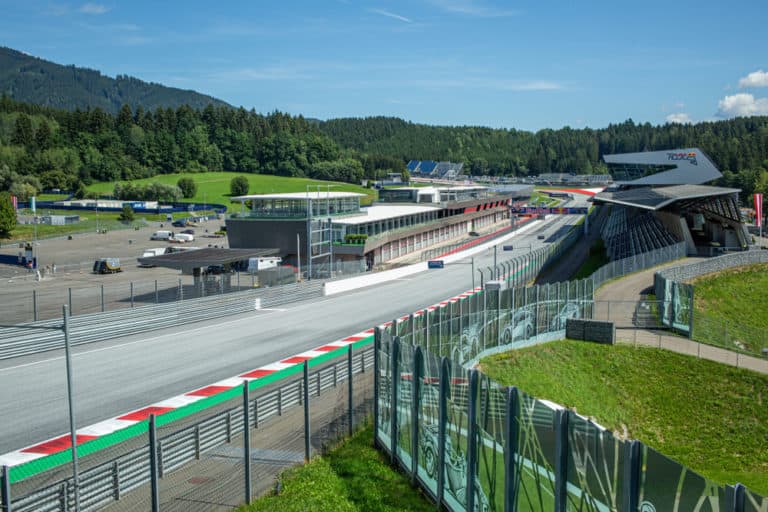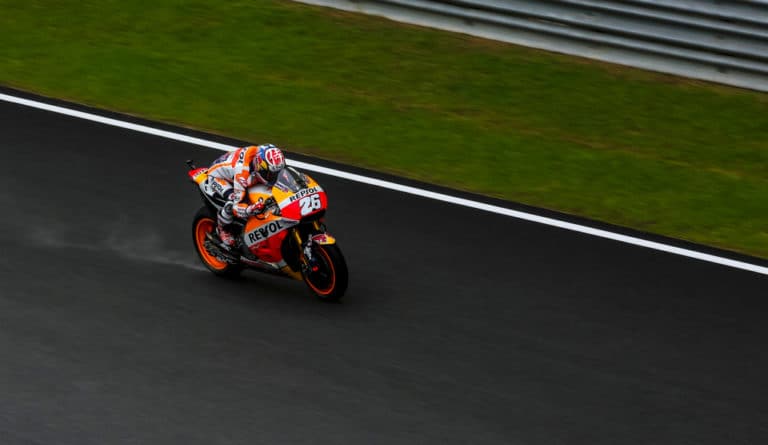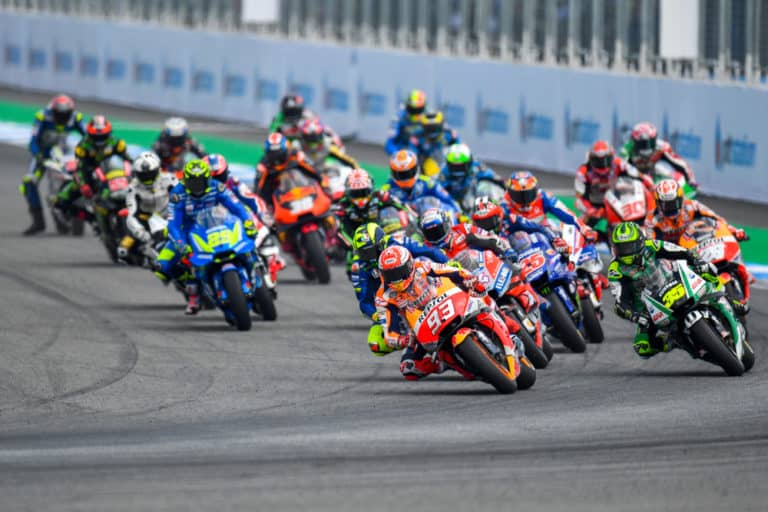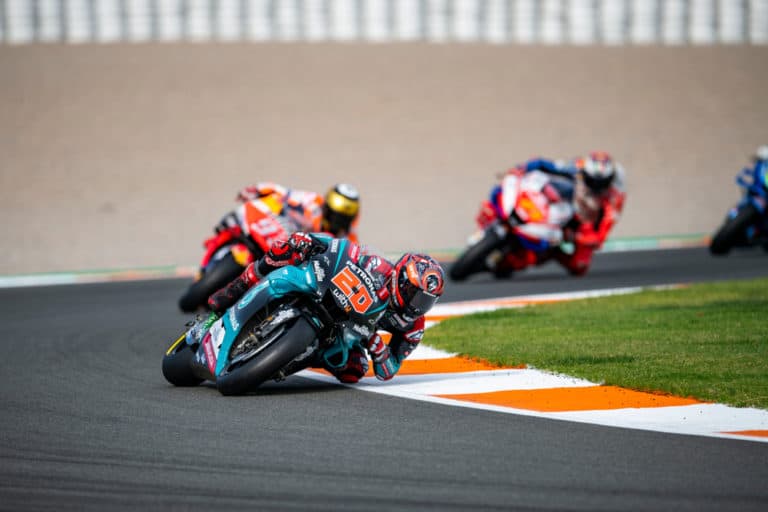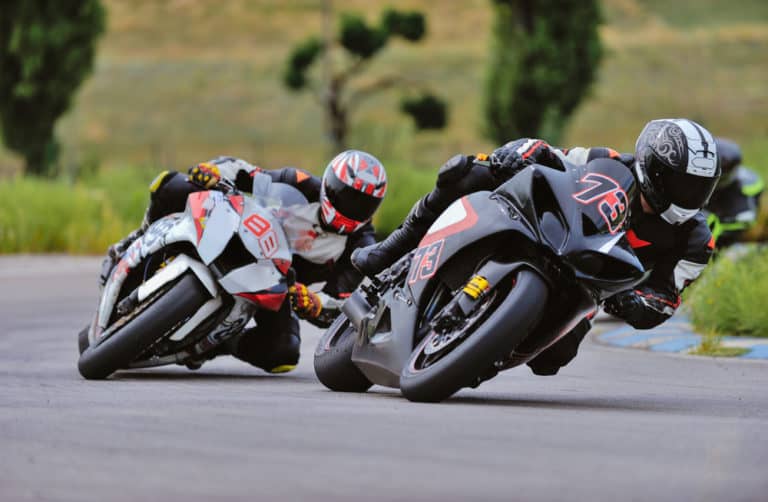While watching MotoGP is exciting, the thrill of riding yourself is hard to beat. Part of being a rider is having the proper equipment, such as a racing suit. I treasure my own suit as an extension of my bike and always advise others to suit up. How much does a MotoGP suit cost?
MotoGP suits cost between $500 – $800 for low-tier suits without a lot of amenities but quickly climb to $90,000 if you want a top-tier racing suit with electronics like GPS, airbags sensors, accelerometers, and gyroscopes. Materials and brands also affect the overall price of MotoGP suits.
The materials and advanced technologies in a MotoGP suit help the riders perform and provide essential security features. However, many more invisible factors play their role in raising the price of a MotoGP suit. Let’s explore all the small details to paint the bigger picture.
How Much Does A MotoGP Suit Cost?
While MotoGP racing suits are almost always eye-catching with their bright colors and graphics, their construction has layers of complexity.
The racing suits have integrated airbags that run along the interior of the racing suit and highly-advanced sensors that control and deploy the airbags when the rider comes off the motorcycle.
Furthermore, it also has a water bladder inside that runs through the back of the rider’s helmet via a tube, enabling them to sip water throughout their race. Each MotoGP race suit is hand-made and carefully constructed to deliver the best in comfort and performance.
Because of all their features, you can expect to pay up to $90,000 for a top-tier MotoGP racing suit. However, when you remove the technologies within the suit, the price will become much lower, too.
Inexpensive racing suits without the fancy toys are available for around $500 – $800 and increase in price as you add decals, colors, graphics, accessories, and extra protection like titanium plating. MotoGP racing suits can be either cowhide or kangaroo leather to provide maximum abrasion resistance during a fall.
Kangaroo leather is exotic and therefore more expensive than cowhide leather, so you can expect to pay more for kangaroo MotoGP racing suits.
What Makes MotoGP Suits So Pricey?
MotoGP suits are expensive because their hand-made construction must provide freedom and protection to vital body parts, like the knees, lower back, and underarms. The suits have removable inner-lining and enough ventilation to keep riders cool in hot temperatures.
Does Machinery make MotoGP Suits?
Since high-speed motorcycle crashes are fatal, MotoGP riders need only the best quality and construction suits. Machines are not the best alternative for quality because they focus on mass production.
As a result, every MotoGP suit is hand-made and carefully constructed to the contours of the racer to maximize comfort when they shift to an aggressive position on the bike. It should also allow for good blood flow throughout the body.
Their hand-made construction also helps to tailor the race suit to its rider’s precise measurements. If there is a slight mistake or miscalculation in the positioning of the safety fabrics, it may cost a rider his life.
What Can You Expect To Find Inside A MotoGP Suit?
Manufacturers do not produce a MotoGP racing suit from one end to the other in a single go. Instead, every suit consists of leather panels that stitch together and take several hours to complete. Since MotoGP racers fall directly on the tarmac, they need strong abrasive-resistant suits.
Regarding abrasion resistance, remember that as a MotoGP racer who goes down, you want to slide, not roll. Rolling will damage bones, tendons, and other body parts because it is equivalent to receiving some strong horse kicks all over the body as you bounce off the tarmac.
These suits can become heavy, weighing as much as 15.4lbs (7kgs), far different from the featherlight, fire-resistant suits used by Formula One drivers.
The suit’s knee, underarm, and lower back areas have unique elastic paneling to provide both freedom of movement and improved safety for the sensitive areas of the rider. The interior has removable inner-lining for cushioning and appropriate ventilation to keep riders cool during hot temperatures.
MotoGP racing suits have a hump on the back that houses electronics like gyroscopes, GPS, airbag sensors, and accelerometers. These instruments help the rider’s crew determine whether a crash results from the rider, the motorcycle, or a technical failure.
Furthermore, an integrated water bladder connects through the back of the rider’s helmet via a tube, allowing water access. It also provides ventilation and ensures better aerodynamics during the race.
MotoGP Racing Suits Have Integrated Airbags
MotoGP airbags became mandatory in 2018 and still remain one of the most critical features of a MotoGP race suit.
The airbag sits around the vital parts of a rider – shoulders, rib cage, and back – and thanks to the presence of accelerometers, gyroscopes, GPS, and special sensors, it knows precisely when to deploy the airbag. It will not deploy with a near-miss or other random event.
Two gas canisters house the airbags, which inflate within 25 milliseconds – four times quicker than you can blink. They remain inflated for five seconds, long enough to absorb the impact of the fall and allow riders time to start sliding.
After five seconds, the rider should be sliding on the tarmac, at which point they rely on their suit’s leather to protect them.
MotoGP Racing Suits Contain Armor Plating
Cowhide and Kangaroo leather may have excellent abrasive-resistant properties, but riders need more to survive a high-speed fall. Consequently, MotoGP racing suits have armor to protect the most vulnerable areas of the rider’s body – elbows, shoulders, knees, and hips.
The metal reinforcements help absorb the impact of a hard asphalt knock while remaining lightweight enough not to impede the rider’s performance. The top-tier racing suits use titanium to protect the body because it has an incredibly high impact strength that’s well suited to MotoGP crashes.
Who Makes MotoGP Racing Suits?
Most of the major motorcycle brands produce their own MotoGP racing suits. They include:
- Honda
- Yamaha
- Kawasaki
- Suzuki
- BMW
- Ducati
- Aprilia
Another great option is to opt for manufacturers like Dainese or Repsol, who produce some of the best racing suits for the average consumer.
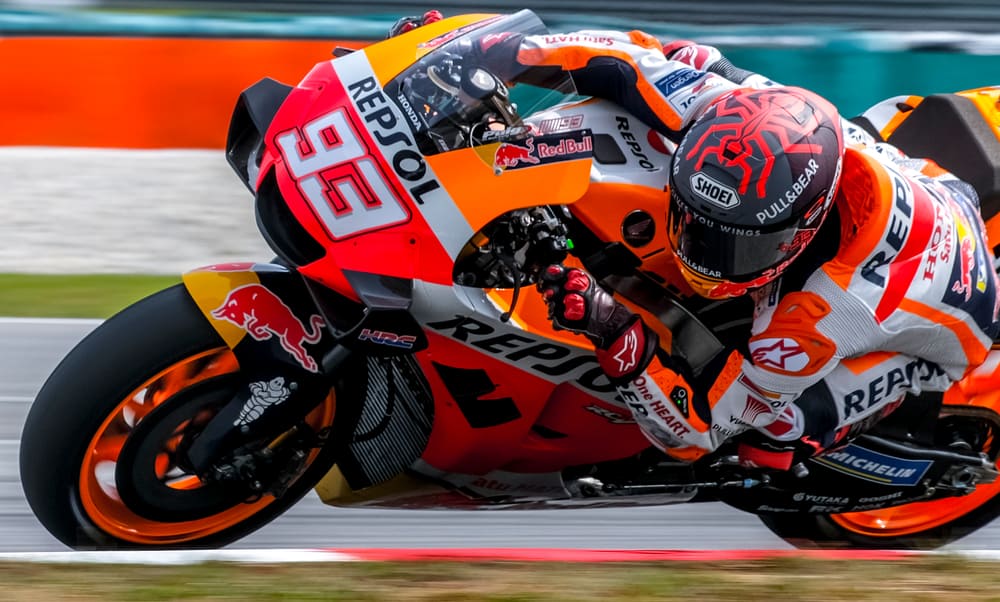
Conclusion
An average MotoGP race suit for consumers goes for around $500 – $800, becoming more expensive when you add amenities. The suits that professional MotoGP riders use cost between $70,000 – $90,000 because they’re hand-made and contain advanced technologies to improve performance.
Sources
- https://www.reddit.com/r/motogp/comments/9oklbb/how_much_can_it_cost_a_competition_suit_similar/
- https://www.autosport.com/motogp/news/safety-devices-in-motogp-airbags-helmets-boots/6438518/
- https://www.autosport.com/motogp/news/safety-devices-in-motogp-airbags-helmets-boots/6438518/
- https://www.ebay.co.uk/b/MotoGP-Motorcycle-Motorsports-Racing-Riding-Suits/177106/bn_62661506
- https://www.asphaltandrubber.com/reviews/dainese-fitnet-custom-leathers-review/

